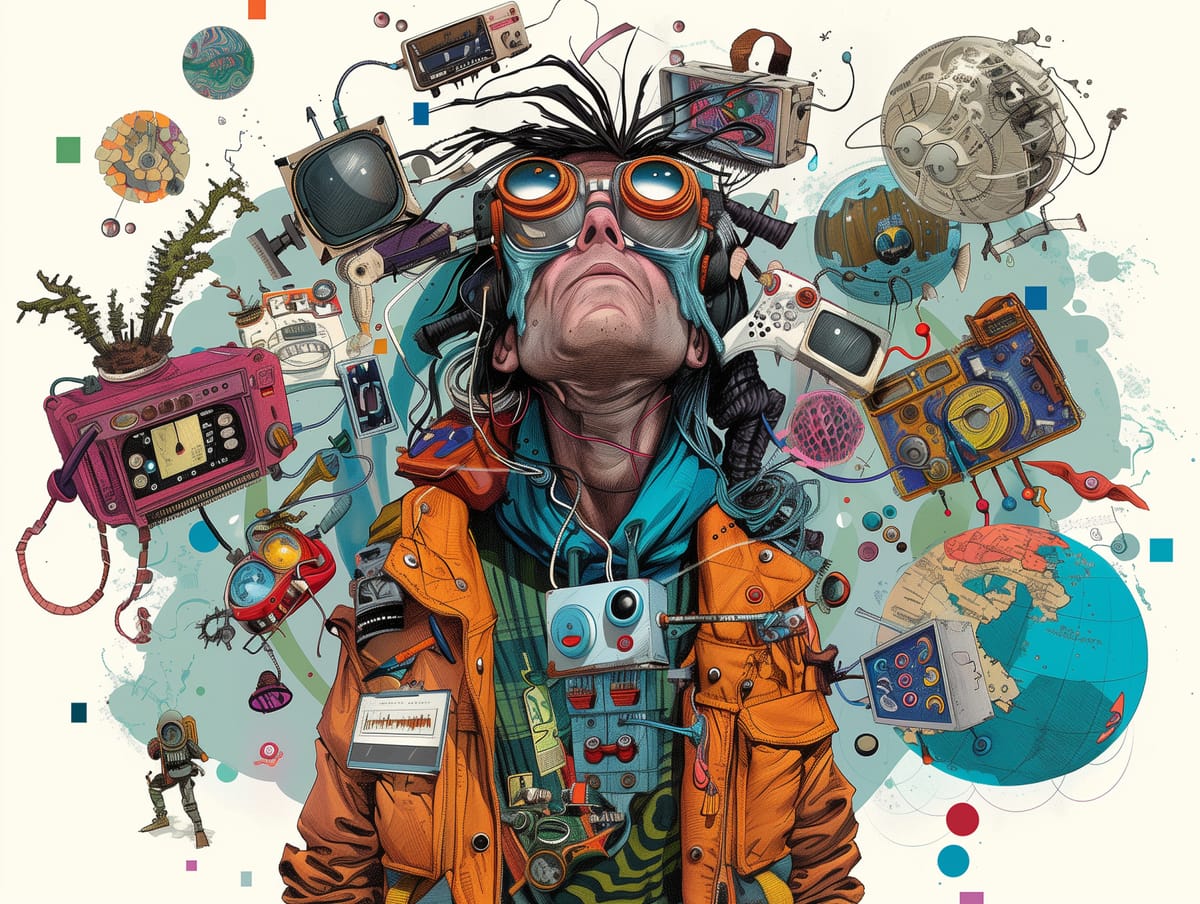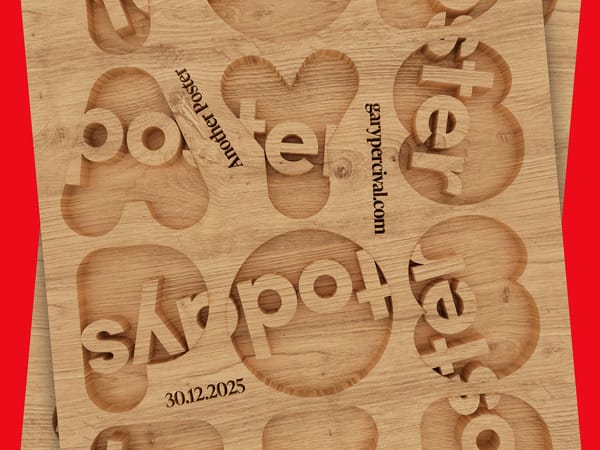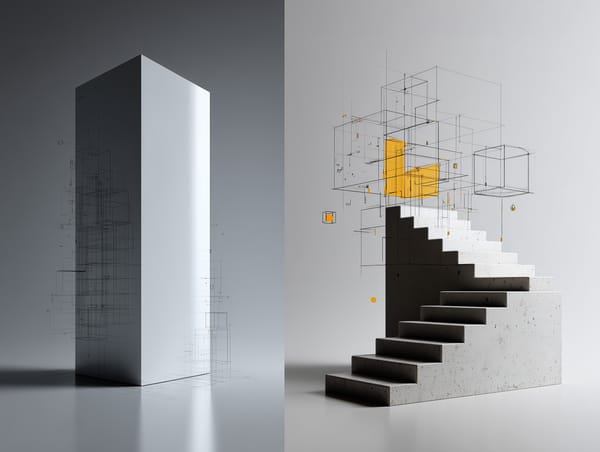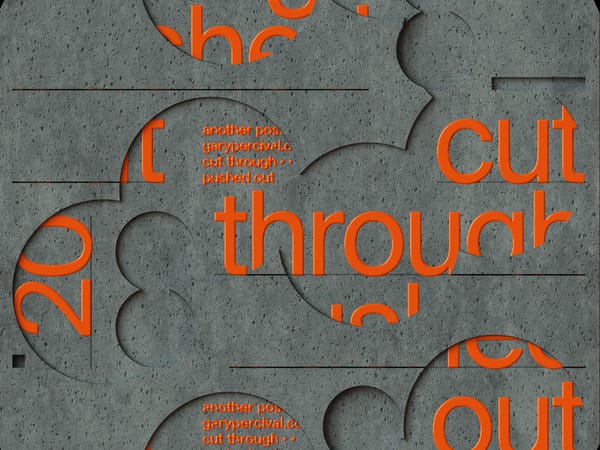Embracing the Weird: The Secret to Keeping Your Creative Edge Razor-Sharp
"By intentionally seeking out and embracing the weird, we force our minds to break free from established patterns and expectations."

What if the secret to your next great idea lies in the bizarre?
As creatives, we’re constantly searching for that spark—that magical ingredient that will set our work apart and keep our ideas fresh and exciting.
But in a world saturated with content and endless scrolling, how do we maintain our creative edge? The answer might surprise you: It’s time to get weird.
Embracing the unconventional, the offbeat, and even the downright strange can be the key to unlocking new levels of creativity and innovation.
In this post, we’ll explore:
• Why weird works
• How to cultivate your own brand of quirky
• Practical ways to infuse your creative process with a healthy dose of the bizarre
Why Weird Works
Breaking patterns and expectations:
Our brains are wired to recognise patterns and make predictions based on past experiences. This is great for survival, but it can be a creativity killer.
By intentionally seeking out and embracing the weird, we force our minds to break free from established patterns and expectations. This cognitive disruption opens up new neural pathways and allows for more original thinking.
Standing out in a sea of sameness:
In today's oversaturated market, being "good" isn't good enough anymore. Clients and audiences are bombarded with polished, professional work at every turn.
By incorporating elements of weirdness into your creations, you instantly become more memorable and distinct. Think about it: which logo do you remember more—the 100th minimalist wordmark you've seen this week or the one with the bizarre mascot that made you do a double-take?
Tapping into emotional responses:
Weird things elicit strong emotional responses. They can make us laugh, feel uncomfortable, or spark curiosity.
By harnessing the power of the strange, you can create work that resonates with your audience on a deeper emotional level. This emotional connection is what transforms casual spectators into devoted followers and clients.
Fostering a growth mindset:
Embracing weirdness requires a willingness to take risks and step outside your comfort zone.
This mindset is crucial for creative growth and innovation. By regularly pushing your boundaries and exploring the strange, you develop resilience and adaptability—key traits for thriving in the ever-changing creative landscape.
Cultivating Your Own Brand of Quirky
Now that we understand why weird works, how do we go about cultivating our own unique brand of quirky?
Here are some strategies to help you tap into your inner weirdo:
Embrace your oddities:
We all have quirks and idiosyncrasies that make us unique. Instead of hiding these traits, celebrate them!
Your weirdness sets you apart from other creatives. Maybe you are obsessed with vintage board games, or perhaps you can recite entire episodes of obscure TV shows. Whatever your quirks may be, find ways to incorporate them into your work and creative process.
Create a "weird inspiration" collection:
Start curating a collection of strange and unusual things that catch your eye.
This can be a physical box of odd objects, a digital mood board of bizarre images, or a playlist of experimental music. Whenever you need a creative boost, dive into your collection and see what new connections and ideas emerge.
Practice "weird association":
Take two completely unrelated objects or concepts and force yourself to find connections between them.
The weirder the pairing, the better. For example, how might you combine a teapot and a space shuttle? This exercise trains your brain to make unexpected connections and can lead to truly original ideas.
Seek out strange experiences:
Break out of your routine and actively seek out unusual experiences.
Attend an offbeat workshop, visit a quirky museum, or try a bizarre new hobby. These experiences will expand your perspective and provide fresh fodder for your creative work.
Practical Ways to Infuse Weirdness into Your Creative Process
Are you ready to get weird?
Here are some practical techniques you can start using today to inject some strangeness into your creative process:
The Random Word Generator Method:
When starting a new project, use a random word generator to give yourself an unexpected starting point.
Challenge yourself to incorporate this random element into your design or concept, no matter how strange it may seem at first. This constraint can lead to truly original solutions.
The “What If?” Game:
Ask yourself a series of increasingly bizarre “What if?” questions related to your project.
What if your logo had to be edible? What if your website could only be navigated by interpretive dance? While these extreme scenarios might not be practical, they can spark ideas that push your work in exciting new directions.
The Surrealist Technique of Automatic Drawing:
Borrowed from the Surrealist art movement, automatic drawing involves creating art without conscious thought or planning.
Set a timer for 5–10 minutes and let your hand move across the page without judgement or intention. The resulting doodles and shapes can serve as a springboard for more refined ideas.
The Alter Ego Approach:
Create an alter ego or character with traits completely opposite to your own.
When faced with a creative challenge, ask yourself how this alter ego would approach the problem. This shift in perspective can help you break free from your usual thought patterns.
The Time Travel Design Brief:
Imagine your current project brief, but set in a different time period—either in the past or the future.
How would a Victorian-era designer approach your modern branding project? What might a logo look like 500 years from now? This temporal shift can yield fascinating and unexpected results.
The Sensory Swap:
Choose a sense (sight, sound, taste, smell, touch) and try to experience your project through that lens.
If your website design were a piece of music, what would it sound like? If your logo were a flavour, what would it taste like? Translating your work across sensory experiences can uncover new dimensions and possibilities.
Embracing the Weird in Client Work
While personal projects are a great place to let your freak flag fly, you might be wondering how to incorporate weirdness into client work without scaring them off.
Here are some tips for bringing the strange to your professional projects:
Start small:
You don’t have to go full-on bizarre right out of the gate.
Begin by introducing small elements of weirdness into your work and gauging the client’s reaction. A slightly unconventional colour choice or an unexpected illustration style can be a good starting point.
Justify your choices:
When presenting weird ideas to clients, always be prepared to explain your reasoning.
Show how your unconventional approach solves their problem or meets their objectives in a unique and effective way.
Provide options:
Give clients a range of options, from more conventional to increasingly weird.
This allows them to see the potential of embracing the strange while still feeling in control of the final decision.
Educate your clients:
Help your clients understand the value of standing out and taking calculated risks.
Share case studies of successful brands that have embraced weirdness to outstanding effect.
Find the right clients:
Some clients will naturally be more open to unconventional approaches than others.
As you develop your unique style, you’ll attract clients who appreciate and seek out your particular brand of weirdness.
Overcoming the Fear of Being Too Weird
It’s natural to feel some apprehension about fully embracing your weird side.
Here are some common fears and how to overcome them:
Fear of judgement:
Remember that not everyone will “get” your work, and that’s okay.
Focus on connecting with those who appreciate your unique vision.
Fear of failure:
Reframe failure as a learning opportunity.
Each weird experiment that doesn’t quite work out is still valuable data for your creative growth.
Fear of losing clients:
Your unconventional approach may turn off some clients, but it will attract those who are specifically seeking something different.
Trust that your authentic weirdness will resonate with the right audience.
Fear of going too far:
There’s a fine line between intriguingly weird and off-puttingly strange.
Pay attention to feedback and be willing to dial it back if necessary. With practice, you’ll develop a sense of striking the right balance.
Conclusion: Weird is Wonderful
In a world that often rewards conformity, embracing your weird side can feel like a radical act.
But for creatives, it’s not just an option; it’s a necessity. By cultivating and expressing your unique brand of strange, you’ll keep your creative edge razor-sharp, produce more original work, and stand out in an increasingly crowded marketplace.
So go ahead—let your freak flag fly.
Explore the bizarre, question the norm, and revel in the unconventional. Your creativity (and your clients) will thank you for it.
Remember, in the words of Dr. Seuss, “Why fit in when you were born to stand out?”
Embrace your weirdness and watch your creativity soar to new, gloriously strange heights.



